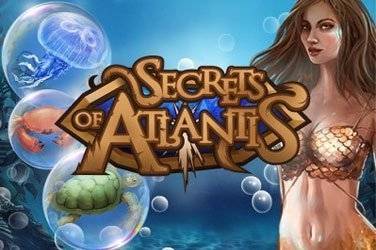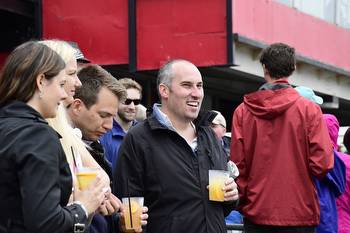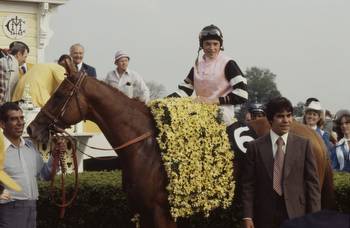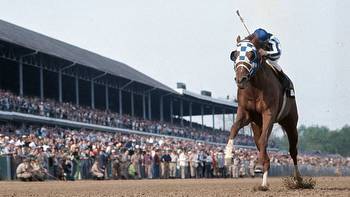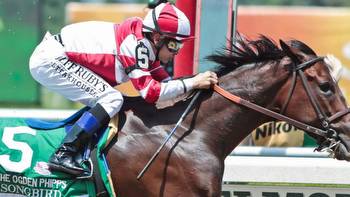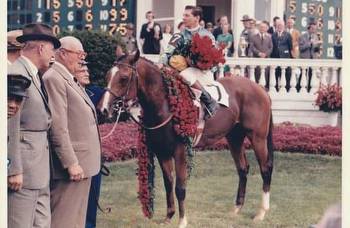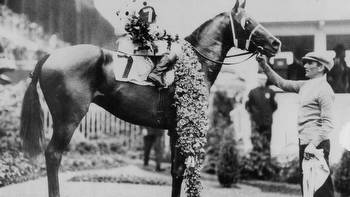Native Dancer: The Nearly Perfect Grey Ghost of Sagamore
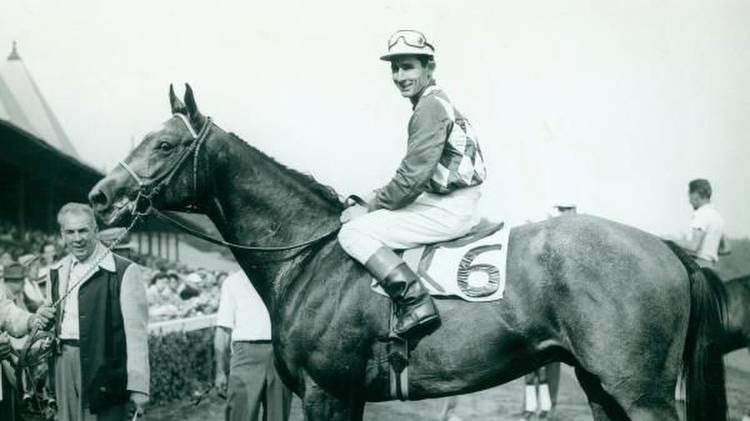
He was the practically perfect Thoroughbred.
Twenty-two starts. Twenty-one victories.
Yet in a telling commentary about the sport’s measuring stick for greatness, it was that single loss which keeps Native Dancer in the background whenever the names of Thoroughbred racing’s most legendary champions are rattled off these days.
It’s the great Triple Crown champions, horses like Secretariat, Citation, Affirmed, and Seattle Slew, that come to mind quickest for most people when racing’s immortals are rattled off. Yet if not for a brutal trip and runner-up finish in the 1953 Kentucky Derby, Native Dancer would be included in the same sentence as the others and just as revered as any of them.
He was that good, except for a fateful first Saturday in May that will always haunt his legacy.
With so much of the sport’s attention now focused on the Triple Crown, the memories of “The Grey Ghost of Sagamore” have faded in many regards. Native Dancer was, however, a bona fide star of his era, transcending racing thanks to the burgeoning medium of television, and falling a head shy of perfection says everything anyone needs to know about him.
Raised at Sagamore Farm in Maryland, Native Dancer was a homebred colt owned by Alfred G. Vanderbilt II, whose family tree included some of America’s richest and most famous business magnates.
Trained by Bill Winfrey, Native Dancer was an impressive winner of his career debut, registering a 4 ½-length victory at Jamaica on April 19, 1952. Four days later, he won the Youthful Stakes by six lengths as a 4-5 favorite, but was then given a rest until Saratoga opened in August.
The 2-year-old son of Polynesian made up for lost time at the Spa, reeling off four stakes win in the Flash, Saratoga Special, Grand Union Hotel, and Hopeful.
He closed out 1952 by carrying Vanderbilt’s cerise and white colors to three more wins and was justly rewarded for a perfect 9-for-9 campaign with year-end honors as the champion 2-year-old and as Horse of the Year in two of the era’s three major polls, the ones conducted by the Thoroughbred Racing Association and Turf and Sport Digest.
Heading into 1953, Native Dancer towered over the 3-year-old division. He had been sent off at odds below even money in his final eight wins at 2 and that dominance made the handsome grey a heavy favorite to become the first horse since Citation in 1948 to complete the Triple Crown sweep of the Kentucky Derby, Preakness and Belmont Stakes.
Though he got off to a late start, he opened his sophomore season with a win in the Gotham on April 18. A week later, he put in his final prep for the Derby by taking the Wood Memorial by 4 ½ lengths as a 1-10 favorite.
The Kentucky Derby seemed destined to be little more than a coronation for a fabulous colt who was turning into a folk hero thanks to television. He was bet down to a 7-10 favorite in the run for the roses, but in his bid for a 12th straight win fate turned its back on jockey Eric Guerin.
Native Dancer was roughed on the first turn as Dark Star grabbed the lead through comfortable fractions and little went right for Vanderbilt’s champion after that.
"The actual bumping didn't bother me." Guerin said in a 1973 Sports Illustrated article. “It's what it did that hurt. It turned my horse around and he ended up on the heels of the horse inside us. I had to take him up sharply."
The chart of the 1953 Derby told the tale of Native Dancer’s miserable journey as it read: “Native Dancer, roughed at the first turn by Money Broker, was eased back to secure racing room, raced wide during the run to the upper turn, then saved ground entering the stretch and finished strongly but could not overtake the winner, although probably best.”
After rallying along the rail in the stretch, Guerin guided Native Dancer outside of Dark Star in the final furlong and was gaining ground quickly at the end but the wire arrived with Dark Star in front by a diminishing head.
Years later, Vanderbilt recounted his memories of that painful loss in the New York Times, saying, “I disagree that the race was lost in the early stages. ‘The Dancer’ had overcome it and moved back into contention. Coming around the last turn, though, Eric lost confidence in the horse and began cutting corners. He dropped to the inside instead of swinging wide as he always did before. In thinking back on it, I find myself wondering if he got panicky - I never said this to anyone before - and reacted as if it had become a life or death proposition. He should have said to himself, 'This isn't an ordinary horse. This is the Dancer. He can still win from the outside.’’’
As hard as the loss was to swallow for his connections, Native Dancer was unbowed. He rebounded from that first blemish on his record by winning the Withers and then captured the Preakness and Belmont Stakes to give him two-thirds of the Triple Crown.
He stretched his second winning streak to seven by notching wins in the Dwyer, Arlington Classic, Travers, and American Derby before a bruised foot brought his 3-year-old season to an end.
Voted the champion 3-year-old colt, Native Dancer returned at 4 and in his second start won the prestigious Metropolitan Handicap by making up 3 ½ lengths in the final furlong while toting 130 pounds. He then carried 137 pounds while winning a handicap race at Saratoga and there was conjecture that Vanderbilt would send his charismatic star overseas to run against Europe’s finest in the Prix de l’Arc de Triomphe.
Unfortunately it was not to be, as continuing problems with the colt’s hoof forced Vanderbilt to retire Native Dancer, who was named the 1954 Horse of the Year despite his brief campaign.
He left the racetrack with an enviable record of 21 wins in 22 starts with earnings of $785,240 and departed for career at stud that was equally brilliant.
He sired Kauai King, who, like him, won two legs of the Triple Crown (the 1966 Kentucky Derby and Preakness) as well as Dancer’s Image who finished first in the 1968 Derby only to be disqualified.
His offspring also included stakes winners like Native Charger and Protanto.
His daughters included Shenanigans, the dam of Ruffian, and Natalma, the dam of Northern Dancer.
Perhaps his most important son was Raise a Native, who sired Derby/Preakness winner Majestic Prince, Mr. Prospector, Alydar, and Exclusive Native, who in turn sired 1978 Triple Crown winner Affirmed and Genuine Risk.
The Triple Crown may have eluded Native Dancer, but his bloodlines can be found in the last three horses to complete that sweep: Affirmed (1978), American Pharoah (2015), and Justify (2018).
It’s surely a perfect tribute for the practically perfect horse.
- Native Dancer was inducted into the Racing Hall of Fame in 1963.
- He tied for third with Citation in an Associated Press poll of the great racehorses of the 20th Century.
- He sired 43 stakes winners.
- Native Dancer appeared on the cover of Time Magazine in 1954.
- He was favored in all 21 of his starts in which wagering was accepted. After he was sent off at 7-5 odds in his first race, he was 4-5 or less in every other start, except for his final race, which was a three-horse race with no wagering.
